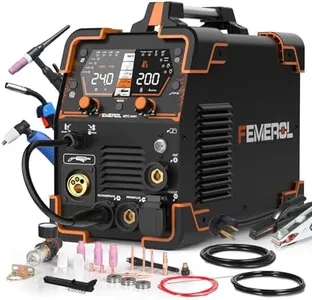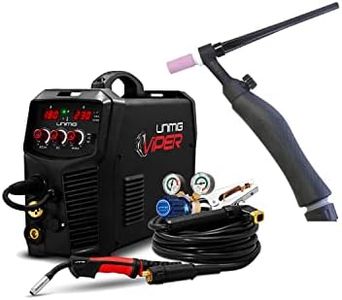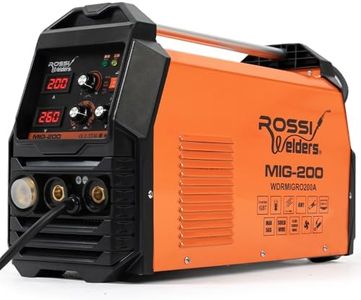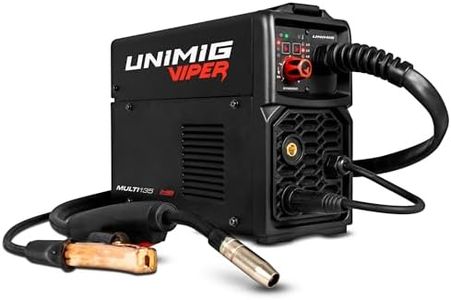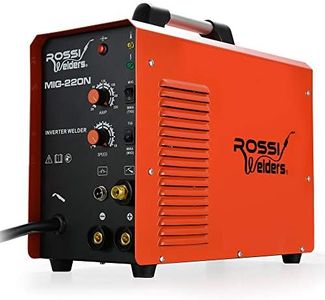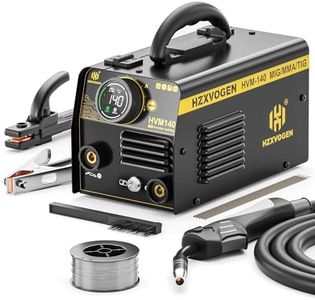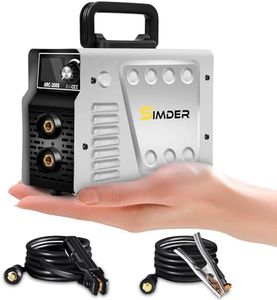We Use CookiesWe use cookies to enhance the security, performance,
functionality and for analytical and promotional activities. By continuing to browse this site you
are agreeing to our privacy policy
10 Best Tig Welders
From leading brands and best sellers available on the web.By clicking on a link to a third party's website, log data is shared with that third party.
Buying Guide for the Best Tig Welders
Choosing the right TIG welder means matching your needs and skills to the features that will matter most for the type of welding you want to do. Start by thinking about the materials you plan to weld, the thickness ranges you’ll handle, where you’ll use the welder (home or professional environment), and how easy you want the machine to be to use and transport. Understanding a few key specifications will help guide you toward a TIG welder that fits your individual requirements, ensuring better results and a safer, more enjoyable experience.Amperage RangeAmperage range refers to the minimum and maximum amount of current (measured in amps) that the welder can supply. This is important because it determines what thickness and types of metal you can effectively weld. Lower amperages are needed for thin materials like sheet metal, while higher amperages are required for thick steel or aluminum pieces. Welders typically fall into three segments: low range (down to 10 amps for very thin materials), medium (up to 150-200 amps suitable for most chores), and high range (200+ amps for heavy-duty or industrial use). Pick a welder with an amperage range that covers the materials and project sizes you expect to handle most often.
Input VoltageInput voltage is the type of electrical supply the TIG welder requires to operate, generally expressed as 110/120V for household outlets, or 220/240V for industrial or heavy-duty applications. Some machines allow switching between both. Lower voltage is fine for light, occasional work and portability, while higher voltage is better for thicker metals and prolonged use. Consider what outlets are available in your workspace, and choose a welder that matches your environment’s power supply.
AC/DC CapabilityTIG welders may support DC (direct current), AC (alternating current), or both. DC is suitable for most metals like steel and stainless steel, while AC is necessary for welding aluminum and magnesium. Some welders only offer DC, while dual AC/DC models handle a wider range of jobs. If you anticipate working with aluminum, choosing a unit with AC capability is crucial; otherwise, DC-only models might suffice.
Duty CycleDuty cycle describes how long a welder can run continuously at a given output before needing to cool down, usually expressed as a percentage of a 10-minute period. For example, a 40% duty cycle at 150 amps means you can weld for 4 minutes and must wait 6 minutes for cooling. Machines with higher duty cycles are better for longer, uninterrupted work sessions, while lower duty cycles are manageable for hobbyists or small tasks. Think about the length and frequency of your welding projects when deciding how much duty cycle you’ll need.
Adjustability and ControlsThis refers to how precisely you can set the welding parameters, such as amperage, AC balance, and pre/post gas flow. Advanced controls provide more flexibility and finer welds, which can help achieve results with different thicknesses or materials. Basic models have fewer settings and are easier for beginners, while more adjustments are useful as you gain experience or tackle specialized tasks. If you’re just starting out, simplicity might be best, but for pros or those wanting to grow their skills, look for more control options.
PortabilityPortability describes how easy it is to move the welder around, mainly determined by its size and weight. Lighter, compact welders are easier to transport if you need to work at different locations or have limited shop space, while larger, heavier units typically offer more power and features, ideal for a fixed setup. Consider whether you’ll need to carry the welder frequently or if it can usually stay in one place.
Lift Start vs. High-Frequency StartThese are two main ignition methods for TIG welding. Lift start requires you to touch the tungsten electrode to the workpiece to start the arc, while high-frequency (HF) start uses an electric pulse to initiate the arc without contact, preventing contamination of the weld. High-frequency start is generally preferred for cleaner, higher-quality welds and aluminum jobs, while lift start is common on budget or portable welders. Choose based on the precision you need and whether avoiding electrode contamination is important for your work.
